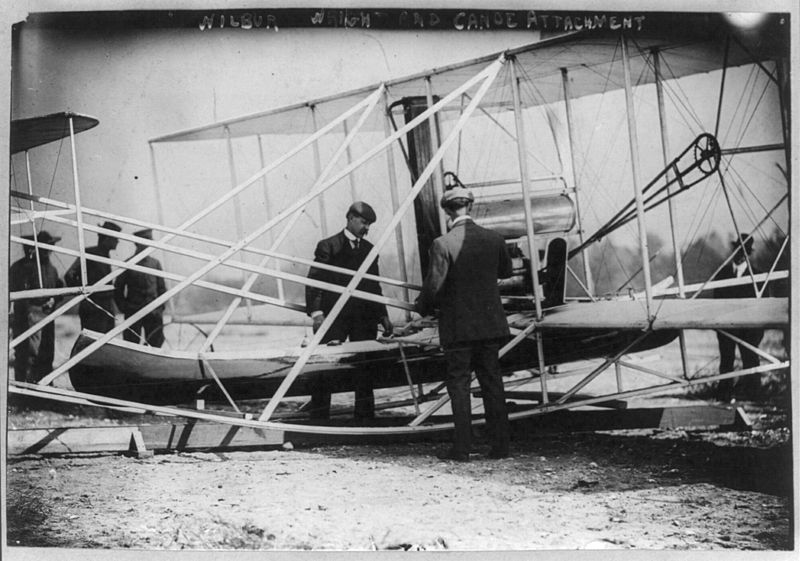Uncovering the Elements of Knowledge at the Heart of Innovation
This is one of our free-to-access content pieces. To gain access to all Ideas for Leaders content please Log In Here or if you are not already a Subscriber then Subscribe Here.

An innovative new idea is purposefully built by combining elements of knowledge — a daunting task of intuition, elimination and focus.
The idea of a new invention may seem to suddenly appear in the imagination of the inventor. In truth, the inventor has carefully constructed the idea by combining different ‘elements of knowledge’. These elements include natural phenomena and knowledge from previous scientists and inventors (not to mention the contributions of practitioners of the liberal arts such as historians and philosophers). Thus, while Orville and Wilbur Wright built the first functioning airplane, their success was based on pulling together four different elements of knowledge: means of control and stability of flight; wing sections with good lift; a lightweight propulsion system, and a high-efficiency propeller. Bill Gates and Paul Allen’s operating system was possible also because of four elements of knowledge: the computer language BASIC, the PDP-8 minicomputer, the microprocessor, and the Altair desktop microcomputer.
In short, the genius of the great inventors is not to sit and wait for Eureka ideas to materialize in their imaginations, but rather to identify and master the set of knowledge elements that need to be put together in order to develop the idea.
The complete set of possible combinations of knowledge elements — from which an inventor draws the few elements that he or she needs to master and combine into a new idea — is what Dartmouth economics professor John Scott calls the innovation-insight sample space. The innovation-insight sample space highlights the daunting task of discovering that breakthrough innovative insight for a new invention.
For example, imagine that there are a million elements of knowledge in the entire universe of knowledge. An inventor’s knowledge set contains 1,000 elements of knowledge. And the essential idea for an invention requires just three elements of knowledge. With these figures, the proportion of the invention-insight sample space for which the inventor’s mastered set of elements contains the essential idea is one billionth of the sample space (or 1 in a billion).
With those needle-in-a-haystack odds, it may seem that an accidental discovery is the only option. However, the inventor can take steps to increase that tiny proportion. The ultimate goal is identifying and mastering the handful of knowledge elements required for the invention.
The process begins with exclusion, in which the inventor uses his or her intuition to put aside the knowledge in the entire universe that will probably not have the knowledge elements required for the invention insight. The is still a great amount of uncertainty, but at least the proportion of relevant elements in the inventor’s total pool of knowledge elements would be larger. (For example, focusing on just 20% of the knowledge universe raises the 1-in-a-billion proportion figure to 125 in a billion — an improvement, although still daunting.)
The next question: which of the remaining elements should the inventor master? In the diversity step, the inventor explores a number of different combinations of knowledge elements. The inventor then focuses in the third step on certain combinations of knowledge elements. Through these two steps, the inventor is pulling closer to the idea. If necessary, the inventor can, through the composition step, reduce the number of combinations by eliminating from consideration a specific number of elements in the essential idea. (For example, any idea that requires a combination of 10 elements is not pursued.) Eventually, moving through exclusion, focus, diversity and perhaps composition, the inventor reaches the recognition step: seeing the essential elements pulled together as a working configuration of the idea. This is the Eureka moment.
The concept of the innovation-insight sample space and the process described above offers some guidelines for encouraging and enabling creativity and innovation. Invention is possible if inventors share their knowledge. The inventors of planes, cars, electric light bulbs, telephones or any other legendary invention were aware of the work that had been done and was being done on the issues they sought to resolve.
Inventors have an incentive to share their work as they realize that such sharing is vital to resolve the major issues related to the invention. Eventually, of course, when the invention is close, the inventors will close the door to their shops and work out the final kinks by themselves.
To encourage and enable innovation, an organization must help its people gather the knowledge elements, whether internally from colleagues or externally, required to move toward the insight. This can be done formally, through licensing agreements, for example, or informally through the “spillover” of knowledge from other organizations (patent citations testify to the spillover effect).
Organizations can also offer processing aid (through their information systems) for more sophisticated invention insights — ones that require more than a handful of knowledge elements.
A final innovative insight usually occurs in the mind of an individual, but to reach that insight, individuals can use all the help they can receive from other inventors — and from supportive organizations.

Ideas for Leaders is a free-to-access site. If you enjoy our content and find it valuable, please consider subscribing to our Developing Leaders Quarterly publication, this presents academic, business and consultant perspectives on leadership issues in a beautifully produced, small volume delivered to your desk four times a year.

For the less than the price of a coffee a week you can read over 650 summaries of research that cost universities over $1 billion to produce.
Use our Ideas to:
Speak to us on how else you can leverage this content to benefit your organization. info@ideasforleaders.com